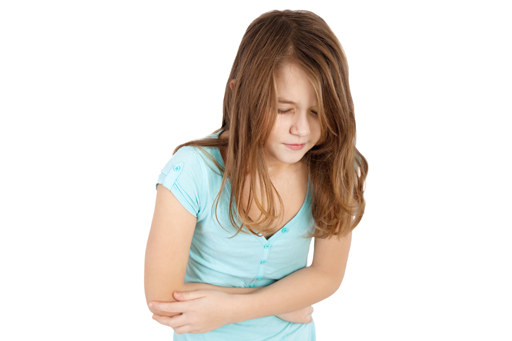Abdominal migraine
In Clinical
Follow this topic
Bookmark
Record learning outcomes
Scenario
Melissa comes in with her daughter Poppy to talk to pharmacy technician Vicky as she’s not been feeling well.
“What’s going on?” asks Vicky.
“We’re not sure, to be honest, and neither is the doctor,” answers Melissa. “She has been getting these terrible stomach aches that come on really suddenly. It’s happened a few times, and she’s absolutely fine in between, so we know it isn’t a stomach bug, appendicitis or anything like that. What I have noticed is that it seems to come on when she has had a busy few days and I wondered whether it is triggered by chocolate, though Pops would dispute that. And, to be fair, sometimes she has chocolate and she’s OK. You know, it’s very much like my migraines, with the nausea, going off food and her feeling a bit funny beforehand and tired afterwards, but obviously it can’t be that because she doesn’t get a headache.”
“I think you might just have hit the nail on the head there Melissa, if you’ll pardon the pun,” exclaims Vicky.

Answer
It sounds as though Poppy is suffering from abdominal migraine (AM), a form of migraine predominantly seen in children aged five to nine years, though occasionally adults do experience it. The symptoms are as Melissa describes: acute, severe pain in the centre of the abdomen, nausea, vomiting, loss of appetite and pallor, lasting anything from an hour to three days. Headache is absent. AM is more common in the children of parents who have a history of migraine, but is only diagnosed once other causes of the symptoms have been excluded.
Treatment is either symptomatic – hot water bottles and simple analgesia – or, if that doesn’t work to a decent degree, as for any other migraine, triptans can be taken, although it is worth noting that not all serotonin1-receptor agonists (or 5HT1-receptor agonists, as the drug class is more accurately known) are licensed for use in children. If the child is suffering from frequent AM, preventative therapy (e.g. pizotifen or propranolol) may be tried, although again, the age of the patient affects the choice. Trigger avoidance is also recommended – for example, cutting back on items such as chocolate and caffeine, ensuring hydration levels are maintained, keeping stress under control, and making sure the child has a regular routine for sleeping and eating. Keeping a diary can be very helpful in this respect.
The bigger picture
Abdominal migraine may sound like an invented condition, but this is most definitely not the case: it is listed in the International Headache Society’s widely-regarded IHCD-3 (International Classification of Headache Disorders, 3rd edition) and there is a growing body of evidence for it being under-diagnosed as a cause of recurrent abdominal pain in children, affecting some one to four per cent of boys and girls.
AM rarely persists into adulthood, but often evolves into more traditional forms of migraine. In children, the headache of migraine tends to affect the whole head rather than one side only, and attacks are usually short – a few hours at most. Aura may be a feature, as sometimes are vomiting, dizziness, sensitivity to noise and light, fatigue and motion sickness.
Extend your learning
- Have a look at the diary template designed for younger people by The Migraine Trust
- Migraine can have a substantial impact on a child’s education, in terms of both attendance and performance. Read the information provided to parents and educators on the subject
- Learn about the diagnostic criteria for abdominal migraine
- Find out about the symptoms adults with abdominal migraine may experience
- A booklet on migraine in children has been written for teachers by the charity Migraine Action but is a useful resource for most people.
